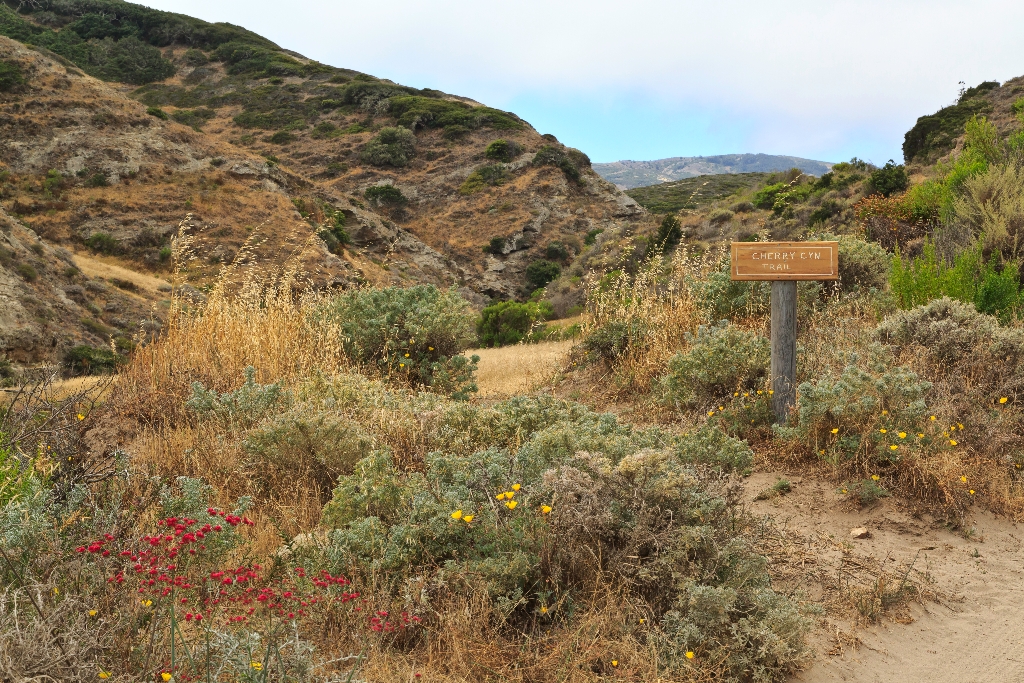
Return of the Natives
Over time, the reasons for valuing the islands changed and a new approach to stewardship emerged with the inclusion of Santa Rosa Island within Channel Islands National Park. While continuing the ranching goal of preserving an undeveloped landscape, the NPS also began to focus on restoration and recovery from the unintended consequences of browsing and grazing by nonnative animals.
What was once an island covered with coastal sage scrub, chaparral, oak scrub, oak woodland, and native grasslands, had given way to nonnative, European grazing grasses and an assortment of weeds, including oats, bromes, foxtails, thistles, and mustard. Today vegetation mapping by the NPS shows that nearly 25 percent of the plant species found on Santa Rosa Island are nonnative, consisting of approximately 70 percent of the ground cover.
Native plants that develop in isolation are often vulnerable to competition from nonnative species. Many of these nonnative plants have evolved with browsing and grazing pressure (browsers eat woody vegetation consisting of twigs and branches and grazers eat herbs and grasses). The native island plants have not coexisted with browsers and grazers since the pygmy mammoths, nearly 12,000 years ago.
During the 1800s up to 80,000 sheep severely overgrazed the island, eliminating most of the native vegetation and creating open, disturbed, and eroded soils that allowed nonnative plants to flourish. Once established, these nonnatives out competed the natives for limited soil and moisture due to their longer germination and growth cycles and continued browsing and grazing by cattle, horses, deer, elk, and pigs. With the end of the ranching era cattle were removed in 1998, pigs in the early 1990s, and deer and elk in 2012.
The restoration of the island's native vegetation is a primary goal of the NPS. Special focus is being placed on the 36 plants endemic to the islands, those occurring only on the Channel Islands and nowhere else in the world. Six of these occur only on Santa Rosa Island. Today, eight of these endemic plants are listed as endangered species. To ensure the survival of these unique species and encourage the recovery of the island's native vegetation, native plantings and nonnative weed control are currently underway.
The recovery has been remarkable. Many native plants are now spreading beyond the buried seed banks and steep canyon walls and cliffs, where they remained protected from browsing and grazing for over 150 years, and are reestablishing themselves throughout the island. Like most of the island's drainages, this one where you are standing used to be almost completely devoid of vegetation except for nonnative grasses and weeds. Today, it's a thriving riparian habitat with willows, toyon, lemonade berry, lupine, buckwheat, and a variety of other native plants.
You can actually help with this recovery by cleaning your boots and other possessions, such as backpacks, before you visit to make sure you don't accidentally introduce nonnative species to the island. Together we can ensure the return of native plant communities throughout Santa Rosa Island.
Plants Endemic Only to Santa Rosa Island
1. Soft-leaved paintbrush
2. Santa Rosa Island live-forever
3. East Point dwarf dudleya
4. Hoffmann's slender-flowered gilia
5. Santa Rosa Island Torrey pine
6. Santa Rosa Island manzanita
Is there something we missed for this itinerary?
Itineraries across USA


















































